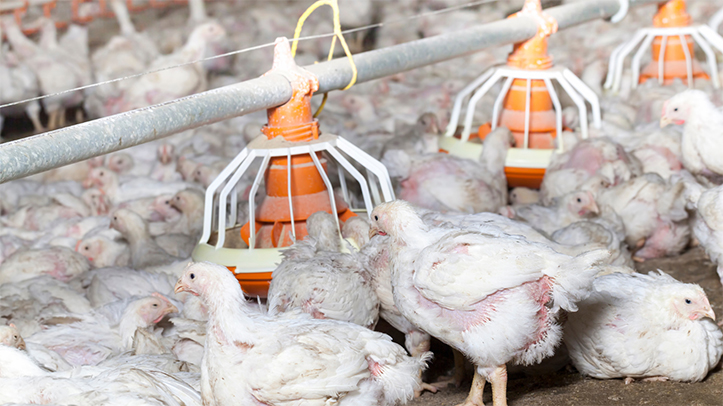The poultry industry is being urged to examine strategies that focus on maximising feed utilisation, due to escalating cereal prices and volatile commodity markets, which are dramatically shrinking production margins.
World renowned poultry nutritionist Rick Kleyn said: “Sky-high feed prices have left the poultry industry extremely vulnerable. Mitigating the impact while maintaining performance, however, is a challenge.”
Mr Kleyn said there isn’t a ‘one size fits all’ solution but a good starting point is to ensure you are utilising as much of the available feed as possible.
“Strategies that prioritise gut health are fundamental in maximising nutrient absorption and feed utilisation, particularly in the absence of antimicrobial solutions,” he said.
“Gut health is a complex area that combines nutrition, as well as bird health and physiology. Maintaining intestinal barrier function, controlling parasitic infections such as coccidiosis, supporting microbial diversity and preventing dysbacteriosis, and reducing inflammation and endogenous loss, are all important factors to consider in the context of gut health.”
From a nutritional health perspective, Mr Kleyn said there are clear areas to bear in mind when formulating diets, highlighting the example of anti-nutritional factors (ANF’s).

“ANF’s are substances which by themselves, or via their metabolic products, affect health and production and can interfere with nutrient utilisation,” explained Mr Kleyn.
“An example of an ANF is β-mannans, which are intensively anti-nutritional and a potent stimulator of an innate immune response, known as Feed-Induced Immune Response (FIIR). They are commonly found in vegetable feed ingredients, such as legumes but also cereals.
“Young chickens are very vulnerable to the ill-effects of FIIR and gut inflammation, and only low β-mannan concentrations are needed (0.20%) to trigger the immune system, making it a common problem in poultry production.”
He said it’s therefore very important to consider the potential impact of dietary β-mannans, particularly in scenarios where rations are being reformulated with ingredients that may present a higher risk.
Mr Kleyn said: “There are tools available to counteract specific issues and while on the face of it they might seem expensive, the return on investment should be weighed-up before rejecting their use. The issue of β-mannans for example, can be counteracted by the inclusion of β-mannanase, a unique enzyme that removes the ANF and prevents the immune response.”
Mr Kleyn added that the higher the feed price, generally the better the return-on-investment feed additives that support improved utilisation offer.
“It can be dangerous to formulate rations based on cost alone for this very reason,” Mr Kleyn said. “It’s often the case that practices that make you money hold true in both good and bad times and stripping diets back in a bid to lower the cost may not yield the desired outcome in terms of profitability.”


